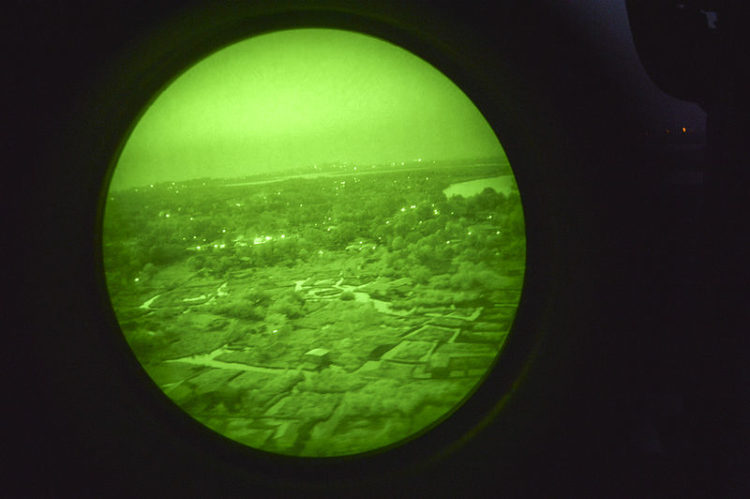It’s difficult to spy on enemy activities in complete darkness unless you’re willing to shine a high beam flashlight to see what is going on, which is, of course, a ridiculous idea. Seeing through the (fairly) total darkness is now possible thanks to night vision goggles (NVGs). Not only that, but they are also available to civilians. You could visit your nearest tactical store, and for sure, you could score some affordable NVGs.
NVGs Began During WWII
In 1935, AEG, a German electrical company, started developing the first NVG devices. In 1939, the German Army used them during World War II. These infrared night vision gadgets were attached to Panther tanks. By the end of the war, around 50 tanks were equipped with night vision devices and were utilized both in the Eastern and Western Fronts.

On the other hand, the US Army patented the first-generation passive devices used in the Vietnam War. Their version uses ambient light instead of the infrared light source. There were two issues with this design:
- It was bulky
- It needed the assistance of the moonlight to function
Why Is It Green?
Short answer: easy on the eyes.
This is not because the manufacturer’s favorite color was green. Our eyes naturally detect the color, which makes it easy for us to identify shapes and figures in the dark.
Here’s AGM Global Vision’s thorough and scientific explanation:
The main reason is that the image intensification screen inside the device is made of phosphor. This substance is used because of its luminance effect, and when struck by electrons that don’t carry color information, it glows bright green. As the electrons pass through the tube, they flow through a microchannel plate, a disc with millions of microchannels. Striking these microchannels bursts of voltage causes the motion to increase rapidly, forming dense clouds of electrons that intensify the original image. These same electrons then strike a screen coated w/ phosphor at the end of the tube. The energy from these electrons creates a greenish image on the screen inside the device. Green phosphor is used because the human eye is most sensitive to the green color pallet and distinguishes more shades of green than any other color.
The Latest NVG Technology Integrates Augmented Reality
Enhanced Night Vision Goggle – Binocular (ENVG-B) is the most advanced NVG. How it works is that it delivers imagery and data directly to the operator’s eyes by combining low light and thermal images and adding a touch of augmented reality, just like in video games! They could also communicate wirelessly and adjust their “screen” brightness. As L3Harris President Lynn Bollengier said, “The advanced capabilities of the ENVG-B give soldiers the unmatched ability to identify, assess and engage a target with greater accuracy and speed.”
If you want to see ENVG-B in action, you can check out this video from Washington Post:
You can build your own (crude) NVG at home
NVG enthusiasts could now build DIY night vision goggles. It’s not as advanced as the real ones, but it’s still pretty cool. Plus, the materials are easy to find, too.
You will need:
- a night vision camera
- infrared LEDs
- LCD glasses
- $150
For instructions, Superhero Armory will explain that to you!
Also, if you wanted to know more about the experiments that the United States and China scientists conducted to see the possibility of night vision being injected straight into the eyes of the operators, we got that covered here.










COMMENTS
You must become a subscriber or login to view or post comments on this article.